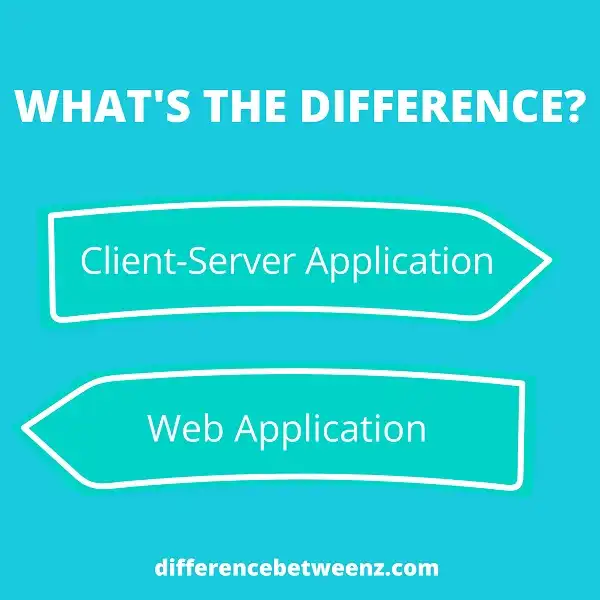Client-server and web applications are both software architectures used to create networked applications. While there are many similarities between the two, there are also some key differences. In this blog post, we’ll take a look at those differences and discuss which type of application might be best for your needs.
What is a Client-Server Application?
Client-server applications are computer programs in which the user (client) interacts with a central server in order to access information or services. The client typically runs on a personal computer or mobile device, while the server is usually located on a remote system such as a mainframe or web server. Client-server applications can be divided into two main types: thin clients and thick clients. Thin clients only require a minimal amount of processing power and memory, as they rely on the server for most tasks. Thick clients, on the other hand, perform many tasks locally and only require servers for specific tasks such as data storage or security. Client-server applications are used in a wide variety of settings, from small businesses to large enterprises.
What is a Web Application?
A Web Application is a software program that is accessed via a web browser over the internet. Web applications are usually written in HTML, CSS, and JavaScript, and are designed to run on a web server. Because they are accessed via a web browser, they can be used by anyone with an internet connection. Web applications are typically used for tasks such as online shopping, banking, and social networking.
Difference between Client Server Application and Web Application
- Client-server applications are designed so that the user interface and all data processing are performed on the user’s computer, also known as the client. Client-server applications can provide a richer user experience because they can utilize the client’s processing power and memory to create a more responsive and feature-rich interface. However, client-server applications also have some drawbacks. First, they require that the client computer have enough processing power and memory to run the application.
- Second, they must be installed on each client computer. Finally, they must be updated on each client computer when new features or fixes are released. Web applications, on the other hand, are designed so that all data processing and storage are performed on a central server. Users access web applications through a web browser, which eliminates the need to install or update the application on their computers.
- Additionally, because web applications are designed to run on powerful servers, they can offer a more responsive and feature-rich user experience than client-server applications. However, web applications do have some drawbacks. First, they require users to have a constant internet connection in order to use them. Second, they can be slower than client-server applications because they must communicate with the server in order to function.
Conclusion
When it comes to understanding the difference between a client-server application and a web application, there are several factors you need to take into account. The first is how the application is delivered. A client-server application is installed on your computer or local network, while a web application resides on a remote server and can be accessed by any internet-connected device. Secondly, security is another key distinction. Client-server applications typically use more secure authentication methods like passwords or certificates, whereas web applications may rely on less sophisticated measures like usernames and passwords. Finally, consider who manages the data.


